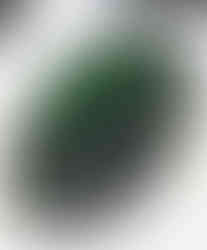Precious Opal: The Magic of Play of Color
- Dalla Stella Federico

- Oct 17
- 7 min read
What Is a Precious Opal?

Precious opal is one of the most fascinating and evocative gemstones ever created by nature. Belonging to the opal family, it stands apart from all other varieties thanks to its extraordinary ability to display the so-called Play of Color, a unique optical phenomenon in which flashes, sparkles, and shifting hues appear to dance within the stone, changing appearance with the movement of light and the observer. This distinctive feature makes it instantly recognizable and highly sought after in both gemology and fine jewelry.

Unlike many crystalline gemstones, opal is a mineraloid – it does not have a regular crystal structure but is instead composed of hydrated silicon dioxide that formed slowly over millions of years. This process occurs when silica-rich solutions filter through porous rocks or volcanic cavities and evaporate, depositing microscopic layers of material. Over time, these deposits accumulate and solidify, resulting in a substance of exceptional optical complexity and natural beauty.

The name opal has ancient and fascinating origins: it derives from the Latin opalus and the Greek opallios, meaning “to see a change.” In ancient Rome, opal was considered the most precious and mysterious gemstone, a symbol of hope and purity, while in the Middle Ages it was thought to be a talisman that brought good fortune and wisdom. In many cultures, opal has been associated with divine light and cosmic harmony, precisely because of its ability to encapsulate all the colors of the visible spectrum within a single stone. Each opal is entirely unique – no two are ever alike. This individuality, combined with its ancient geological history, explains why precious opals are considered among the most poetic and enchanting gems on Earth.
Play of Color - Chemical Composition and Internal Structure of precious opals
Opal is a mineraloid (meaning it lacks a regular crystal structure) composed of hydrated silicon dioxide:
Chemical formula: SiO₂·nH₂O
It typically contains between 3% and 21% water within its structure.
What makes precious opal so special is its microscopic internal architecture: it consists of billions of amorphous silica spheres arranged in a highly ordered, regular pattern. When light enters the stone, it is diffracted and split into various wavelengths, producing the famous Play of Color.
Sphere size: between 150 and 300 nanometers
Ordered arrangement: determines the quality and intensity of the colors
Sphere size → color: larger spheres produce red and orange flashes, while smaller ones result in blue and violet tones
This structure is what distinguishes precious opal from common opal, which has silica spheres arranged randomly and therefore lacks Play of Color.
A Brief History and Major Localities
Opals have been known and treasured for thousands of years: the Romans considered them symbols of purity and hope, while in India they were believed to be fragments of solidified rainbows.
The most important regions in the world for the production of precious opals are:
🇦🇺 Australia: The historical homeland of opal, responsible for about 90% of global production. The most renowned deposits are:
Lightning Ridge (New South Wales): considered the world capital of black and crystal opal, producing some of the rarest and most valuable stones for their intensity, depth, and range of Play of Color. Highly prized in high-end jewelry for their saturated colors and long-term stability.
Coober Pedy (South Australia): one of the most productive and famous deposits worldwide, known for its bright white and crystal opals. These stones often exhibit vivid, even Play of Color and are widely used in classic jewelry.
Queensland: this vast district in northeastern Australia is famous for its boulder opals, which form in veins and cavities within ironstone or sandstone matrix. The natural contrast between host rock and opal produces spectacular patterns and intense colors, making them highly sought after by collectors and designers.
Andamooka (South Australia): one of the oldest opal fields, discovered in the 1930s, known for its white, crystal, and matrix opals, where the Play of Color is dispersed throughout the rock. These stones, sometimes treated to enhance contrast, are appreciated for their unique aesthetics and historical significance.
🇪🇹 Etiopia: Entering the market only in the early 2000s, Ethiopia quickly gained attention from gemologists and collectors for its hydrophane precious opals with exceptional brightness and spectacular Play of Color, especially from the Welo and Shewa regions
🇲🇽 Messico: Famous for its fire opals, which feature a transparent to translucent body with warm orange, red, or yellow tones due to iron oxides. Many also display Play of Color and are highly prized both as collector’s stones and in artistic jewelry.
🇭🇺 Ungheria: Historically significant in the European gem trade, Hungary is known for its milky, translucent opals from the Dubník area, which were among the most sought-after in the world before the discovery of the Australian fields in the 19th century.
🇧🇷 Brasile: In the Pedro II region (Piauí State), precious opals with a light body tone and vivid Play of Color are mined, often used in fine jewelry. Although production is more limited compared to Australia and Ethiopia, these stones are valued for their clarity and optical purity.
Hydrophane (“Dry”) vs. Non-Hydrophane Precious Opals
One of the most important aspects to understand is the distinction between hydrophane and non-hydrophane precious opals, especially in the case of Ethiopian material from Welo.
Hydrophane precious opal (dry opal): a naturally highly porous variety capable of absorbing water, temporarily changing its transparency and color. Once the water evaporates, it returns to its original state.
Stable and ideal for cutting and polishing
The most valued and widely available material from Welo
Non-hydrophane precious opal (Welo): this variety does not absorb water but is often unstable when exposed to air. It tends to crack or dehydrate over time, which makes it unsuitable for cutting. For this reason, such specimens are usually kept in their natural state and stored immersed in water inside containers, where they retain their original appearance.
As regards Australian precious opals, most are non-hydrophane, but they have a completely different level of stability: they are generally much denser, more compact, and stable over time, requiring no water and showing none of the dehydration effects seen in some Ethiopian specimens. For this reason, they can be safely cut and set into jewelry with exceptional long-term durability.
Main Play of Color Patterns
The beauty of precious opals is not defined solely by the intensity or range of their colors but also by the pattern, the way the colors appear across the surface. Every opal is unique, but some patterns are particularly classic and highly valued:
Harlequin: One of the rarest and most valuable, featuring large, square or rhomboid patches of color arranged like a mosaic.
Honeycomb: A hexagonal or polygonal cell-like pattern resembling a honeycomb.
Dragon Skin: An irregular texture reminiscent of reptile scales, often with deep, shifting colors.
Pinfire: Tiny, evenly scattered points of light.
Flashfire: Larger, more diffuse flashes that appear and disappear as the stone is moved.
Rolling Flash: Large bands of color that “roll” across the surface when the opal is tilted.
Broad Flash: Wide, block-like areas of color that shift dramatically.
Script: Thin, intertwined lines of color resembling ancient writing or natural calligraphy.
Rainbow: Bands or arcs of color distributed like a rainbow, often spanning the entire stone.
Flagstone: Flat, irregular color patches resembling overlapping stone slabs.
Asterial: A star-like pattern with rays of color radiating from a central point.
Each pattern tells a different story and can significantly influence the value of the stone, along with factors such as transparency, color saturation, directionality, and body tone.
Cutting and Lapidary Techniques
Opal is a delicate and complex gemstone, and its cutting requires great skill, precision, and sensitivity. Because of its internal structure and relative fragility compared to other gems, most precious opals are processed using specific techniques developed over centuries to maximize the Play of Color while ensuring stability and durability.
Cabochon: The most common and traditional cut, featuring a flat base and a domed top that allows light to penetrate and reflect within the stone, enhancing its colors and patterns. Ideal for solid opals with good body tone and depth.
Rosette: Widely used in the past, particularly in 19th-century jewelry, this faceted, round cut resembles those used for transparent gemstones. Today it is less common but still valued for crystalline opals and antique pieces.
Doublet: A composite stone created by bonding a thin layer of natural opal to a backing, usually basalt, quartzite, or obsidian. This allows thinner opal material to be used while maintaining strong visual impact and mechanical strength.
Triplet: Similar to a doublet but with the addition of a transparent quartz or glass cap on top, protecting the opal and amplifying its Play of Color. Often used in everyday jewelry to increase durability.
Inlay and Mosaic: Modern techniques that use small opal pieces assembled to create intricate decorative surfaces, often seen in artistic jewelry and luxury objects.
Carvings and Artistic Engravings: Rarely, large or unusual opals are carved or engraved by hand to create unique, collectible artworks.
The choice of technique depends on factors such as thickness, transparency, hardness, stability, and aesthetic value of the rough stone. Each method is designed to showcase the opal’s natural beauty while preserving its delicate nature and making it suitable for its final purpose – whether for collecting, jewelry, or display.
Conclusion
A precious opal is far more than a gemstone – it is a natural optical phenomenon trapped within stone, the result of millions of years of silica deposition deep within ancient geological cavities.
The Ethiopian precious opals from Welo, with their vibrant energy and almost liquid brilliance, represent the youngest and most dynamic expression of this gem, while Australian precious opals, with their millennia-old stability and deep, layered colors, embody tradition and timeless elegance.
Both tell a story of light, time, and matter, offering collectors, cutters, and enthusiasts the chance to own a fragment of an eternal rainbow. Each stone is a unique universe, a microcosm of color and form that makes every opal truly unique and inimitable.
Choosing a precious opal means choosing a piece of Earth that speaks the language of light, that is precisely what makes them among the most captivating and poetic gemstones ever created by nature.
Note on images
All the photographs on this page are taken by Angolo Vetusto Earth Stones and depict natural opals from our collection, either sold or currently available. Each image is original, not a stock photo, and represents the authenticity and variety of our specimens.
Discover my special selection of 100% natural Precious Opals!































